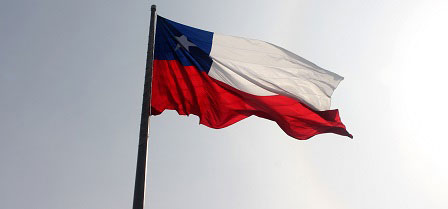Deutsche Bank recently conducted a round of checks with solar developers in Chile – a market which has become one of the more important growth drivers for many solar companies recently.
Here’s a summary of the market research report:
Bottom Line
Checks indicate that solar is now the cheapest source of electricity generation and 2015 installs could exceed 1GW. Although the longer term outlook looks promising, access to good transmission lines and grid saturation remain a major challenge which could potentially impact the growth outlook over the next 2 years.
FSLR and SUNE stand to benefit from near term growth in this market (Chile represents less than 10% of the total installs, but has been growing significantly over the past 12-18 months).
Solar Now At Grid Parity in Chile
Solar and wind are now cheaper sources of power generation in Chile than fossil fuels. According to results from the last round of tender in late October, renewables won 100% of the tendered contracts for the supply of 1,200GWh energy to unregulated customers in Chile.
Three solar parks offered to sell power between $65 and 68/MWh, two wind farms bid a price of $79/MWh and solar thermal plant with storage offered power at $97/MWh. Meanwhile, coal power was offered for $85/MWh in the same tender process. Module prices in Chile are ~52c/W and below 50c/W on bigger projects.
Overall project costs are below $1/W. We forecast ~1GW demand in Chile in 2015 but believe demand could decline to 500MW in 2016 and 400MW in 2017 timeframe.
Favorable Policy Support Should Drive Renewables Momentum in Chile
In May 2014, the Chilean president released the Energy Agenda which included a goal of 45% of installed capacity to come from renewable sources.
With regular tenders from policy makers and net metering, we expect the solar market outlook to remain relatively robust in Chile. Net metering law was introduced in 2014 for systems below 2MW.
For electricity fed into the grid, customers get ~9c/kWh. We believe bulk of the growth in Chile will be in the
form of large utility scale solar projects as system costs continue to decline and PPA prices stabilize in the low $70/MWh range.
Transmission and Low Spot Prices Present Major Challenge
All the big solar projects are in Northern Chile/Atacama desert region where interconnection is the main issue. All the best spaces for solar projects have generally been already taken away. New contracts in this region are difficult to come through because of interconnection challenges.
Chile has approved ~2.1GW of projects, but it does not have any place to put them in.
Many of these projects are unlikely to get built until the transmission lines get fixed. Chile has 4 major transmission lines. The 2 South lines are fine but the Central and Northern grids carry the bulk of the energy and the northern end of central grid along with southern end of northern grid is where most of the solar buildout
if happening. Other major challenge is to get the PPAs signed.
Solar companies either need to go through the mining companies or through the spot market where prices have dropped from average of $180/MWh to as low as $60/MWh over the past 12 months. Outside of this, the next wave of the market is the Santiago market where spot price is relatively stable.
But the issue is there is not a lot of large land to do big projects – only 3MW size projects. Santiago spot prices are in the $120-150/MWh range.














Comments